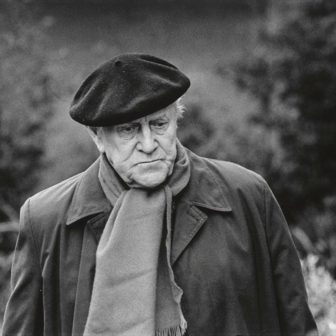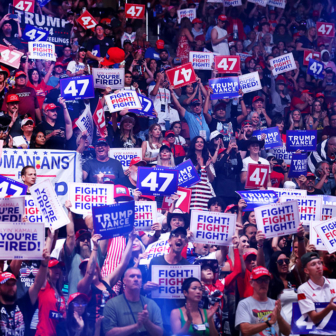Truth-telling has been losing ground ever since 10 December 1992, the day Keating PM told his truths to a predominantly Aboriginal audience at Redfern oval. “We took the traditional lands and smashed the traditional way of life,” he said. “We brought the diseases. The alcohol. We committed the murders. We took the children from their mothers. We practised the discrimination and the exclusion.”
In the years that followed the trajectory of truth-telling had its ups and downs, but by the time we got through nine years of John Howard to the next Labor prime minister all we felt we had to apologise for was taking the children. The Voice vote marked another new nadir. There may be more to come.
For fifteen or twenty years — from, say Bill Stanner’s Boyer lectures in 1968 — truth-telling had worked. Unearthing and telling the story battered Stanner’s “great Australian silence” almost into submission. But from then? Telling schmelling. As Kate Grenville points out in the most recent of her four books on relations between Black and White, the story is told and the facts are known “beyond dispute,” so the question arising is: “What do we do, now that we know?” (italics in the original).
It is a very good question, but it has to compete with old habits. Grenville’s intentions notwithstanding, Unsettled tells the story, once again, and offers only a brief and unconvincing answer to the living-with-knowing problem. Grenville’s difficulties are not hers alone.
Unsettled is a road movie. Setting out from her home town of Sydney Grenville tracks five generations of her family who have made lives and livelihoods on “stolen land,” the first of them headed by Solomon Wiseman, made infamous by his great-great-great-granddaughter’s celebrated novel Secret River, the fifth and furthest out, on the country around Tamworth, worked by her grandfather. Along this journey’s many branches are hung insights, recollections, realisations, facts and observations about small lives in a big history.
Most affecting for Grenville and for the reader are moments that bring her close to vertigo: yes, it really is true, those forebears were living on stolen land and so are we. We are living on land that has been home to more than a billion lives, lives lived in an elaborate civilisation that touched every nook and cranny of a vast continent.
But where does this journey, this quest, this pilgrimage get us, and Grenville? What is the point of arrival? The answer comes almost as an epiphany: it ends at Myall Creek, not far away from her grandfather’s holding, a place where terrible things happened and where, 160 years later, those things have been remembered as they should be:
In memory of the Wirrayaraay people who
Were murdered on the slopes of this ridge
In an unprovoked but premeditated act in
The late afternoon of 10 June 1838.Erected in June 2000 by a group of
Aboriginal and non-Aboriginal Australians
In an act of reconciliation, and in
Acknowledgement of the truth of our
Shared history.We remember them.
Ngyani winangay ganunga
Here, in this place, says Grenville, Aboriginal and non-Aboriginal Australians came together to acknowledge and record the truth. If they can do it, “the rest of us can do it too.”
Well, yes, but also no. Yes, public history of the Myall Creek kind matters; it has power. It is the history curriculum of everyday life. But no because the Myall Creek monument is the exception that proves the rule, which is this: sixty years of truth-telling has left scarcely a mark on public history.
Australia has around 41,000 monuments, plaques, obelisks and other markers of the past. The biggest single group: the war memorials, more than 12,000 of them, memorials to the “fallen” of the first and second world wars. Then come the “explorers” and “pioneers,” followed by civic worthies and local events or places of purely local significance. Only a couple of hundred have to do with Indigenous people or relations with them, and only a small fraction of those tell the truth of the long and violent conflict between Black and White.
The general rule can be illustrated by the example of three history-laden towns in central Queensland, Barcaldine (“birthplace” of the Australian Labor Party), Longreach (“birthplace” of the Queensland and Northern Territory Aerial Services aka Qantas) and Winton (where Banjo Patterson wrote Waltzing Matilda). As well, all three played prominent parts in the dramatic shearers’ strikes of the early 1890s. All are cashing in on this “heritage,” and all have been active installers of monuments and memorials of every kind, more or less doubling the number since the 1970s to a total of 140.
These new markers were installed over the years of the ever-more detailed telling of the story. But if it weren’t for a sanitised display in the Stockman’s Hall of Fame there would not be a single trace of relations between the incumbents and the invaders in the public history of these three towns. This is not for want of local relevance or significance; to the contrary. All three sprang from a frontier that moved west across the vast plains at around 300 kilometres a year, thanks not least to the “Queensland method” of “clearing” the country in advance rather than waiting for Aboriginal resistance and a chance to “teach them a lesson” per massively disproportionate reprisals.
Why does public history tell so much less than history knows? Why do thousands of books, articles and the like tell the story in exhaustive detail, when public history avoids it just about entirely?
Public history is a collective endeavour; most history is not. Books are written by individuals and are bought or borrowed and read by those who want to read them. Public history is different; it has to be agreed (or not disagreed anyway) by anyone and everyone within range. The first rule: unless you’re in a position to overrule others and wear the consequences, avoid touchy topics. And there is no touchier topic in Australia than whether we’re living on “stolen” land.
There is no doubt that telling and learning the truth is for some, including Kate Grenville, a moral imperative. But truth-telling also has a more transactional side to it — after all, what does it cost, apart perhaps from manageable doses of dismay and sadness? And on the other hand, what an agreeable view from the high moral ground!
To others — broadly speaking, those who voted No in the Voice referendum — to tell or not to tell is a more complicated matter. These complications were routinely glossed over in much pro-Yes commentary. Polls and surveys of “opinions” and “attitudes” routinely conclude that it’s mainly a matter of “education levels,” the clear implication being that education brings enlightenment.
Much more to the point: different education levels come with different life-worlds, including different experiences of the powerfully formative institutions of education, where you live, the kind of job you get, the terms of employment and, for some, relationship with a different category of Aboriginal people. From life in the regions or the outer suburbs, blue-collar jobs, less secure employment, lower lifetime earnings and different relations with the education system come mixed feelings about “them,” often as strongly held as they are rarely “articulated.” Those mixed feelings range all the way from the first fine and careless generosity of the 1967 Referendum and its astonishing 90 per cent Yes vote to Pauline Hanson’s “why should they be treat any differently from us” to visceral contempt for Aboriginal people.
This reality is misconstrued by surveys as well as pundits (surveys conducted, we should note by those with “higher” levels of education). Thus did a post-referendum survey find that eight in ten Australians are in favour of “truth-telling processes” and that many of those who vote No in the referendum were in their heart of hearts troubled by the prospect of “division” in “the community.” Thus too the Reconciliation Council, relying on the findings of its “barometer,” conclude not long before the referendum was launched that there was “continued strong support for a constitutionally enshrined Voice.”
To those who conduct surveys, the difference between what people told them and what they did in the voting booth was simply a “shift” in “public opinion.” It is better explained by considering who appealed to which of those mixed feelings in the run-up to the Voice vote. Should we go with Albo and all those other graduates up in Canberra? Or that forthright Peter Dutton and senator Jacinta Nampijinpa Price (an actual Aborigine!)? In this way the vote was swung by the Coalition, that loyal political mouthpiece of the two great wreckers of Aboriginal lives and land, the pastoralists and the miners.
It’s happened before. Perhaps the first time came not all that long after the 1967 referendum, when surveys found most West Australians happy to go along with these new-fangled land rights — until the miners commissioned an infamous TV ad featuring black hands building a wall across a map of the state and posting a sign: “Keep Out — this part of Western Australia is under Aboriginal land claim.” It has happened many times since, perhaps most spectacularly in Bob Hawke’s humiliating backdown on the promise of a treaty (and again, of course in the vote on the Voice).
These are not “shifts in public opinion.” They’re episodes in class relations and the exercise of class power. And there will be more of them if us graduates don’t stop calling other people — well, not deplorables quite, but ignorant, uncaring, lacking in empathy, uneducated and so on and so forth — unless, that is, we realise that it’s not a matter of telling the story again and again. What the story needs now and has been needing for decades is hearing, understanding and remembering — in ways and places that No voters respect and are respected by.
That will not include the Reconciliation Council and its assumption of the moral equivalence of the two parties to “reconciliation” (not to mention its faith in surveys), or by state-based truth-telling agencies, because that’s not what they’re set up to do. Their wholly legitimate but quite limited priority is to at last get compensation (for which they are attacked by those who have thwarted even the most gestural compensation over and again).
There will probably be no movement unless and until all those graduates in a Labor government in Canberra realise that truth-telling demands a re-think as to ways and means. Public history, including public history of the Myall Creek kind, will have an important part to play. In this Labor made a less than inspiring start when it appointed Kim Beazley to get the Australian War Memorial to finally recognise that the 120-year armed conflict between peoples was in fact war (and, we should add, by far Australia’s most costly and formative war). Down in the grassroots much could be achieved by a properly funded and focused body to encourage thousands of local communities to work with Indigenous people and local and professional historians to audit the telling by local public history of the local story, and then to work though those mixed feelings by deciding whether and how the story could be more fully told.
In the meantime, there is one substantial part of the story that could use some more telling: the story of the telling of the story — the story, that is, of the long struggle between White and White and then Black and White over whether or not the story should be told. •




